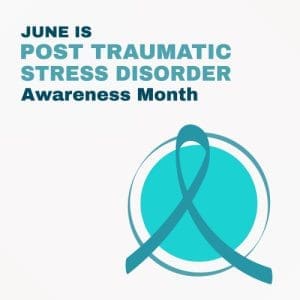Post-Traumatic Stress Disorder, or PTSD, affects an estimated 5% of U.S. adults in any given year and about 6% of the entire population at some point in their lifetime. Learn more about this condition, common treatments, and which healthcare benefits accounts can help with care costs.
What is PTSD?
Post-Traumatic Stress Disorder is a psychiatric condition related to witnessing or experiencing a traumatic event or circumstance. Some think only military members and first responders are susceptible, but it can affect anyone. Common causes of PTSD include war and combat, terrorist acts, natural disasters, severe accidents, and violent personal assault.
PTSD is not new. The first documented case is thought to be that of an Athenian spear carrier in the Marathon Wars, circa 490 B.C. Shakespeare’s Henry IV appears to meet most PTSD diagnostic criteria. PTSD in World War I soldiers led to the British medical journal, The Lancet, coining the term “shell shock.” In 1980, the American Psychiatric Association (APA) formally added Post-Traumatic Stress Disorder to its Diagnostic and Statistical Manual of Mental Disorders.
PTSD Symptoms
A PTSD diagnosis requires that the person has experienced symptoms for at least one month following a traumatic event. Some sufferers do not have symptoms until months or even years later, which can complicate diagnosis.
There are four categories of PTSD symptoms:
- Reliving the traumatic event as flashbacks or nightmares
- Avoiding reminders of trauma-related places, people, and activities
- Having negative thoughts or feelings, including ongoing and distorted beliefs about oneself or others, and decreased interest in previously enjoyed activities
- Experiencing sleep and concentration issues, feeling jumpy, and being easily irritated and angered
PTSD Treatment
PTSD treatment focuses on relieving symptoms, teaching coping skills, and restoring self-esteem through cognitive mental health therapy and medication.
Fortunately for holders of Flexible Spending Accounts (FSAs), Health Savings Accounts (HSAs), and Health Reimbursement Arrangements (HRAs), these treatments fall within qualified expense guidelines. That means that account funds may be used to pay for deductibles, co-pays, co-insurance, and prescription medications.
Cognitive Therapies
- Cognitive Behavioral Therapy (CBT) -CBT focuses on the relationships between thoughts, feelings, and behaviors. It targets current problems and symptoms and works to change patterns that lead to functional difficulties.
- Cognitive Processing Therapy (CPT): CPT is typically a 12-session course of treatment. Patients learn how to challenge and modify unhelpful trauma-related beliefs.
- Cognitive Therapy – Patients work to modify pessimistic evaluations and memories of the trauma. The goal is to interrupt disturbing behaviors and thought patterns interfering with daily life.
- Prolonged Exposure Therapy – Patients are taught to approach, rather than avoid, trauma-related memories, feelings, and situations.
Medications
Sufferers of Post-Traumatic Stress Disorder may also benefit from prescribed medications. People with PTSD have different amounts of neurotransmitters in the brain that are linked to stress management. Prescription medications can help restore the chemical imbalance.
If you or a loved one show the signs of PTSD, it’s essential to see a doctor and get treatment. Your physician can assess your needs and create a recovery plan through therapy and/or medication. Coupled with your health insurance coverage, an FSA, HRA, or HSA can help make PTSD treatment more affordable.

